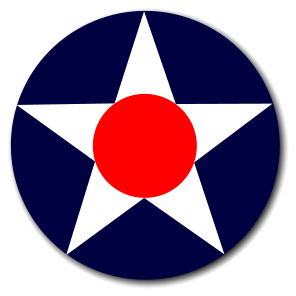 Grumman Owners and Pilots Association Grumman Owners and Pilots Association"Building on our proud AYA heritage..."
|
A Brief Grumman HistoryThe lineage of our airplanes is somewhat interesting if not complicated. Our heritage goes back to 1963 when aircraft designer Jim Bede decided to certify his BD-1 kit airplane to FAR Part 23 standards under the business name of Bede Aviation Corporation. Soon after the launch of the new airplanes testing procedures, there was a dispute among the shareholders and a new company, American Aviation was born, leaving designer Jim Bede behind. On August 29, 1967, American Aviation’s 2 place AA-1 Yankee Clipper was certified. Production began in 1968 with the first AA-1 Yankee Clippers, 1969 models were delivered in the fall of 1968. In 1971, the AA-1A Trainer was born with a modified airfoil that tamed the AA-1 stall characteristics. Also, in 1971 Grumman bought American Aviation and renamed the company Grumman American Aviation. Grumman American Aviation created the AA-1B Trainer and the TR-2. The AA-1B Trainer targeted flight schools. The TR-2 targeted the personal-use market and included an avionics package and upgraded trim packages. In 1977, Grumman American Aviation was acquired by Gulfstream Aerospace and their light aircraft division was called Gulfstream American. Gulfstream American created the AA-1C Lynx and T-Cat. Like Grumman American Aviation, the Lynx was targeted to personal use and the T-Cat for training. The last AA-1C’s were produced in 1978. In 1971 when American Aviation was sold to Grumman, American Aviation was completing the development of the AA-5 Traveler. The Traveler is a 4-place aircraft with a Lycoming O-320-EG2 engine. In 1975, Grumman created an aerodynamic cleanup of the Traveler, a tail modification and added 15 gallons to the 37 gallon fuel capacity and re-named the Traveler an AA-5A Cheetah. The Cheetah is 6 knots faster than the Traveler with the same Lycoming O-320-E2G engine. Grumman began the design of the AA-5B Tiger and the first models were sold as 1975 Models. The Tiger had a gross weight increase from the AA-5A 2200 pounds to 2400 pounds, received a Lycoming 0-360-A4K engine and a 139 knot cruise speed. The last AA-5A’s and AA-5B’s were produced in 1979. In 1988, American General Aviation Corporation was created to put the AA-5B Tiger back in production. American General carried out modifications to the AA-5B that included a split cowl, a new instrument panel and a 28 volt electrical system. The company produced 181 aircraft designated the AG-5B before going out of production in 1992. In 1999, Tiger Aircraft was formed to once again put the Tiger AG-5B back into production. Shipping their first airplanes in 2001, Tiger Aircraft went out of business in 2006 after producing 51 airplanes. The current holder of the AA-1 through the AG-5B Type Certificates is True Flight Aerospace in Valdosta, Georgia. In 1974, Grumman American Aviation designed the GA-7 Cougar twin engine, 4-place airplane. The Cougar went into production in 1978. The GA-7 Cougar had two O-320-D1D 160 HP engines, a cruise speed of 160 knots and a useful load of 1200 pounds. 115 Cougars were built and delivered during its production run in 1978 and 1979. In 1995 the French company SOCATA bought the type certificate, did some prototype testing but never went back into production. In May 2019 the Type Certificate was transferred to the Cougar Aircraft Company. A brief airplane history through magazine covers. From the top, the 1967 AA1, next is the prototype 1970 4-place Patriot, the real first production 4-place Traveler, then the 1975 Tiger followed by the 1978 Cougar. Missing is the 1976 Cheetah. |
|




